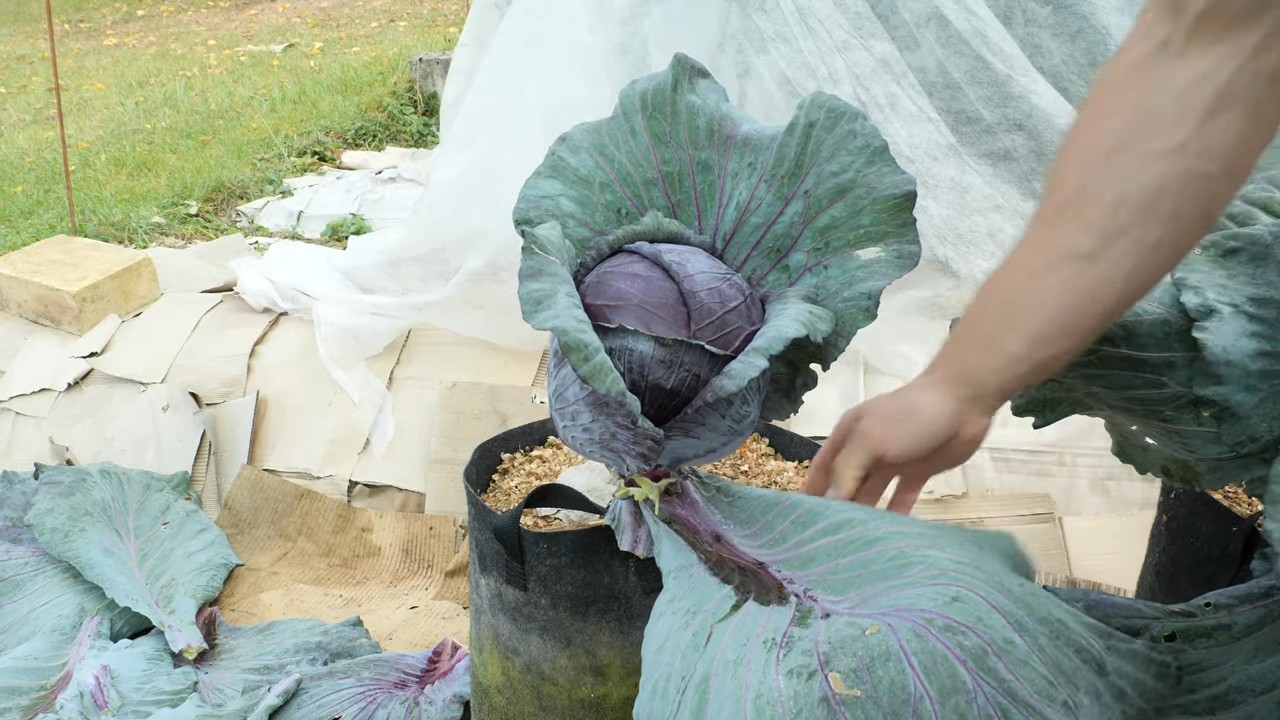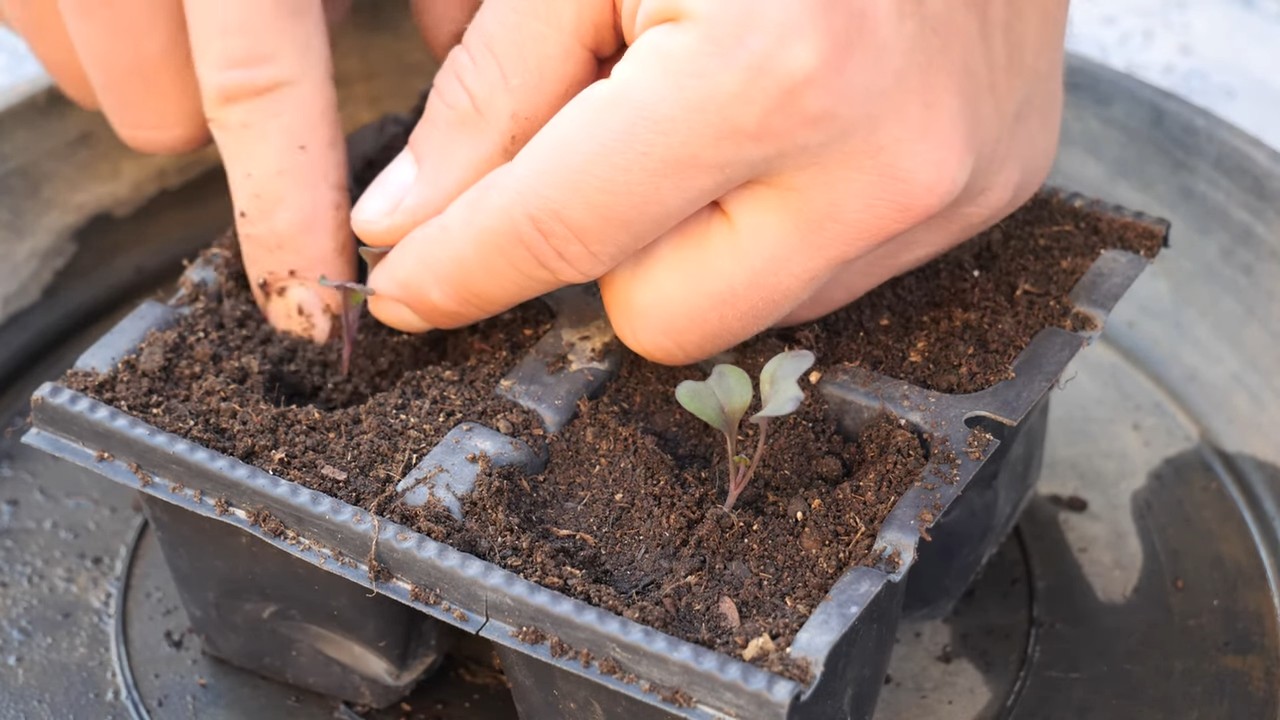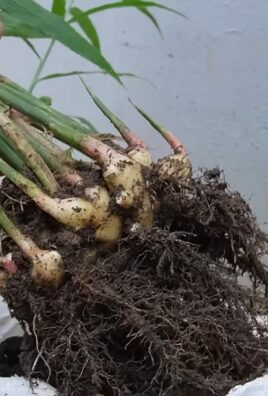Container Red Cabbage Growing: Ever dreamed of harvesting vibrant, jewel-toned red cabbages right from your own patio? Imagine the satisfaction of snipping fresh leaves for a colorful slaw or adding a homegrown touch to your favorite dishes. You don’t need acres of land to enjoy the bounty of a vegetable garden! This DIY guide unlocks the secrets to successfully growing red cabbage in containers, even if you’re a complete beginner.
Cabbage, in general, has a rich history, dating back thousands of years. From ancient Rome, where it was considered a staple food, to medieval Europe, where it was valued for its nutritional benefits and ease of storage, cabbage has nourished civilizations. Red cabbage, with its striking color, adds a touch of elegance to this humble vegetable’s legacy. But beyond its beauty, red cabbage is packed with antioxidants and vitamins, making it a healthy and delicious addition to your diet.
Why should you try container red cabbage growing? Well, many of us live in apartments, condos, or homes with limited yard space. This DIY trick allows you to bypass the need for a traditional garden and still enjoy fresh, homegrown produce. Plus, container gardening offers greater control over soil quality, watering, and pest management, leading to healthier and more productive plants. I’m excited to share these simple yet effective techniques that will have you harvesting beautiful red cabbages in no time!

Growing Red Cabbage in Containers: A Beginner’s Guide
Hey there, fellow gardening enthusiasts! Ever thought about growing your own vibrant red cabbage but don’t have a sprawling garden? No problem! Container gardening is the perfect solution, and red cabbage thrives beautifully in pots. I’m going to walk you through everything you need to know to successfully grow your own delicious and visually stunning red cabbage right on your patio, balcony, or even a sunny windowsill.
Choosing the Right Container and Soil
First things first, let’s talk about the essentials: the container and the soil. These are the foundation for your red cabbage success.
* Container Size: Red cabbage needs room to grow. A container that’s at least 12 inches in diameter and 12 inches deep is ideal. Bigger is generally better, as it allows for more root development and better moisture retention. I personally prefer using 5-gallon buckets or large resin pots.
* Drainage: This is absolutely crucial! Make sure your container has drainage holes at the bottom. Cabbage hates sitting in soggy soil, which can lead to root rot. If your container doesn’t have enough drainage, you can drill a few extra holes.
* Soil: Red cabbage needs rich, well-draining soil. A good quality potting mix is your best bet. Avoid using garden soil directly in containers, as it tends to compact and doesn’t drain well. I like to amend my potting mix with compost or well-rotted manure to add extra nutrients. A mix of equal parts potting mix, compost, and perlite works wonders. The perlite helps with drainage and aeration.
Starting Your Red Cabbage
You have two main options for starting your red cabbage: starting from seed or buying transplants. Both have their pros and cons.
* Starting from Seed: This is the more economical option, and it gives you more control over the entire growing process. However, it requires a bit more time and effort.
* When to Start: Start your seeds indoors about 6-8 weeks before the last expected frost in your area.
* How to Start: Fill seed trays or small pots with seed-starting mix. Sow the seeds about ¼ inch deep and gently water them. Keep the soil moist but not soggy. Place the trays in a warm, sunny location or under grow lights.
* Germination: The seeds should germinate in about 7-10 days.
* Thinning: Once the seedlings have a few true leaves, thin them out, leaving only the strongest seedling in each pot.
* Buying Transplants: This is the easier and faster option. You can find red cabbage transplants at most garden centers in the spring.
* Choosing Transplants: Look for healthy transplants with sturdy stems and vibrant green (or red!) leaves. Avoid plants that are leggy, yellowed, or have signs of pests or diseases.
Planting Your Red Cabbage
Whether you’re transplanting seedlings you started yourself or purchased transplants, the planting process is the same.
1. Prepare the Container: Fill your container with the prepared potting mix, leaving a few inches of space at the top.
2. Dig a Hole: Dig a hole in the center of the container that’s large enough to accommodate the root ball of the transplant.
3. Remove the Transplant: Gently remove the transplant from its container. If the roots are tightly bound, gently loosen them with your fingers.
4. Plant the Transplant: Place the transplant in the hole, making sure the top of the root ball is level with the soil surface.
5. Fill and Water: Fill in the hole with potting mix and gently firm the soil around the base of the plant. Water thoroughly.
Caring for Your Red Cabbage
Now comes the ongoing care. Red cabbage needs consistent attention to thrive.
* Sunlight: Red cabbage needs at least 6 hours of sunlight per day. Place your container in a sunny location.
* Watering: Water regularly, especially during hot, dry weather. The soil should be consistently moist but not soggy. Check the soil moisture by sticking your finger into the soil. If the top inch feels dry, it’s time to water.
* Fertilizing: Red cabbage is a heavy feeder. Fertilize every 2-3 weeks with a balanced liquid fertilizer. Follow the instructions on the fertilizer label. I like to use a fertilizer that’s high in nitrogen, as this promotes leafy growth.
* Pest Control: Keep an eye out for pests such as cabbage worms, aphids, and slugs.
* Cabbage Worms: These are green caterpillars that can quickly devour your cabbage leaves. Handpicking them off the plants is an effective method. You can also use Bacillus thuringiensis (Bt), a natural insecticide that’s safe for humans and pets.
* Aphids: These tiny insects suck the sap from plants. You can spray them off with a strong stream of water or use insecticidal soap.
* Slugs: These slimy creatures can damage your cabbage leaves, especially at night. You can use slug bait or handpick them off the plants.
* Weed Control: Keep the container free of weeds. Weeds compete with your cabbage for nutrients and water.
* Crop Rotation (If Applicable): If you’re growing cabbage in the same container year after year, it’s a good idea to practice crop rotation. This means planting different types of vegetables in the container each year to prevent the buildup of soilborne diseases.
Harvesting Your Red Cabbage
The moment you’ve been waiting for! Harvesting your own homegrown red cabbage is incredibly rewarding.
* When to Harvest: Red cabbage is typically ready to harvest about 70-80 days after transplanting. The head should be firm and solid.
* How to Harvest: Use a sharp knife to cut the head off the plant at the base. Leave a few outer leaves on the plant, as these can continue to produce small side shoots.
Troubleshooting
Even with the best care, you might encounter some problems along the way. Here are a few common issues and how to address them:
* Yellowing Leaves: This could be a sign of nutrient deficiency, overwatering, or underwatering. Check the soil moisture and fertilize if necessary.
* Stunted Growth: This could be caused by poor soil, lack of sunlight, or pests. Make sure your cabbage is getting enough sunlight and nutrients, and check for pests.
* Cracked Heads: This is usually caused by inconsistent watering. Try to keep the soil consistently moist.
* Bolting (Premature Flowering): This can happen if the cabbage is exposed to extreme temperature fluctuations. Try to protect your cabbage from extreme heat or cold.
Extra Tips for Success
Here are a few extra tips to help you grow the best red cabbage possible:
* Choose the Right Variety: Some red cabbage varieties are better suited for container gardening than others. Look for compact varieties like ‘Red Express’ or ‘Ruby Ball’.
* Mulch: Add a layer of mulch to the top of the soil to help retain moisture and suppress weeds.
* Companion Planting: Plant your red cabbage with companion plants like dill, chamomile, or rosemary. These plants can help deter pests and attract beneficial insects.
* Succession Planting: Plant a new batch of red cabbage every few weeks to extend your harvest season.
Enjoying Your Harvest
Now that you’ve harvested your beautiful red cabbage, it’s time to enjoy it! Red cabbage is incredibly versatile and can be used in a variety of dishes.
* Salads: Shredded red cabbage adds a vibrant color and crunchy texture to salads.
* Slaws: Red cabbage is a classic ingredient in coleslaw.
* Pickling: Pickled red cabbage is a delicious and tangy condiment.
* Roasting: Roasted red cabbage is a surprisingly delicious side dish.
* Soups and Stews: Red cabbage can be added to soups and stews for extra flavor and nutrients.
Growing red cabbage in containers is a fun and rewarding experience. With a little bit of care and attention, you can enjoy fresh, homegrown red cabbage right from your own backyard. Happy gardening!

Conclusion
So, there you have it! Growing red cabbage in containers isn’t just a whimsical gardening project; it’s a practical, space-saving, and deeply rewarding way to bring fresh, vibrant produce right to your doorstep. We’ve walked through the essential steps, from selecting the perfect container and soil to nurturing your cabbage through its growth cycle. But why is this DIY trick a must-try?
Firstly, it democratizes gardening. You don’t need acres of land to enjoy the satisfaction of harvesting your own vegetables. A sunny balcony, a small patio, or even a well-lit windowsill can become a thriving mini-farm. Secondly, it puts you in control. You dictate the soil quality, the watering schedule, and the pest control methods, ensuring that your red cabbage is grown organically and free from harmful chemicals. This is especially important for those conscious about what they consume. Thirdly, it’s incredibly cost-effective. Think about the price of organic red cabbage at the grocery store. By growing your own, you’re not only saving money but also gaining a deeper appreciation for the food you eat.
But the benefits extend beyond the practical. Gardening is therapeutic. It’s a chance to connect with nature, to slow down, and to nurture something from seed to harvest. The vibrant purple hues of your homegrown red cabbage will add a splash of color to your garden and your plate.
Ready to take your container gardening to the next level? Consider these variations:
* Companion Planting: Plant marigolds around your red cabbage to deter pests naturally. Their bright colors also add visual appeal.
* Succession Planting: Stagger your planting schedule to ensure a continuous harvest throughout the growing season. Plant a new batch of seeds every few weeks.
* Different Varieties: Experiment with different varieties of red cabbage, such as ‘Red Express’ for early harvests or ‘Ruby Ball’ for a classic, round head.
* Vertical Gardening: If space is truly limited, explore vertical gardening options. You can use stacked planters or hanging baskets to maximize your growing area.
Don’t be afraid to experiment and adapt these techniques to your specific environment and preferences. Gardening is a journey of learning and discovery. The most important thing is to get started!
We’re confident that you’ll find growing red cabbage in containers to be a fulfilling and delicious experience. So, grab your seeds, prepare your containers, and get ready to witness the magic of nature unfold. We encourage you to try this DIY trick and share your experiences with us! Post photos of your container gardens, share your tips and tricks, and let us know what worked best for you. Let’s build a community of container gardening enthusiasts and inspire others to grow their own food. Happy gardening!
Frequently Asked Questions (FAQ)
Q: What is the best size container for growing red cabbage?
A: The ideal container size for growing red cabbage is at least 12 inches in diameter and 12 inches deep. A 5-gallon container is generally sufficient for one plant. Larger containers, such as 10-gallon pots, will provide even more room for root development and can support larger heads of cabbage. Ensure the container has adequate drainage holes to prevent waterlogging.
Q: What type of soil should I use for container-grown red cabbage?
A: Red cabbage thrives in well-draining, nutrient-rich soil. A good potting mix specifically formulated for vegetables is ideal. You can also create your own mix by combining equal parts of compost, peat moss (or coconut coir), and perlite or vermiculite. Compost provides essential nutrients, peat moss or coconut coir retains moisture, and perlite or vermiculite improves drainage. Avoid using garden soil, as it can be too heavy and may contain pests or diseases.
Q: How much sunlight does red cabbage need?
A: Red cabbage requires at least 6 hours of direct sunlight per day to grow properly. Choose a location that receives full sun for most of the day. If you live in a particularly hot climate, some afternoon shade may be beneficial to prevent the leaves from scorching. If you don’t have access to enough natural sunlight, you can supplement with grow lights.
Q: How often should I water my container-grown red cabbage?
A: Water your red cabbage regularly, keeping the soil consistently moist but not waterlogged. Check the soil moisture level daily by sticking your finger about an inch into the soil. If it feels dry, it’s time to water. Water deeply, allowing the water to drain out of the bottom of the container. Avoid overhead watering, as this can promote fungal diseases. During hot, dry weather, you may need to water more frequently.
Q: How do I fertilize my red cabbage plants?
A: Red cabbage is a heavy feeder and requires regular fertilization. Start fertilizing your plants about two weeks after transplanting them into their containers. Use a balanced, water-soluble fertilizer specifically formulated for vegetables. Follow the instructions on the fertilizer package for application rates. You can also supplement with organic fertilizers, such as compost tea or fish emulsion. Fertilize every 2-3 weeks throughout the growing season.
Q: What are some common pests and diseases that affect red cabbage, and how can I control them?
A: Common pests that affect red cabbage include cabbage worms, aphids, and flea beetles. Cabbage worms can be handpicked off the plants or controlled with Bacillus thuringiensis (Bt), a natural insecticide. Aphids can be washed off with a strong stream of water or controlled with insecticidal soap. Flea beetles can be deterred with row covers or controlled with pyrethrin-based insecticides. Common diseases that affect red cabbage include clubroot and black rot. Clubroot can be prevented by ensuring good soil drainage and maintaining a soil pH of 6.5-7.0. Black rot can be prevented by using disease-free seeds and avoiding overhead watering.
Q: How long does it take for red cabbage to mature?
A: Red cabbage typically takes 70-85 days to mature from transplanting. The exact time will depend on the variety, growing conditions, and climate. You’ll know your red cabbage is ready to harvest when the head is firm and tightly packed.
Q: Can I grow red cabbage in containers indoors?
A: While it’s possible to grow red cabbage indoors, it can be challenging. Red cabbage requires a lot of sunlight, so you’ll need to provide supplemental lighting with grow lights. You’ll also need to ensure good air circulation and maintain a consistent temperature. It’s generally easier and more successful to grow red cabbage outdoors in containers.
Q: How do I harvest red cabbage?
A: To harvest red cabbage, use a sharp knife to cut the head from the stem, leaving a few outer leaves intact. Harvest when the head is firm and tightly packed. You can store red cabbage in the refrigerator for several weeks.
Q: Can I grow red cabbage in containers in hot climates?
A: Yes, you can grow red cabbage in containers in hot climates, but you’ll need to take some precautions. Provide some afternoon shade to protect the plants from scorching. Water more frequently to keep the soil moist. Choose heat-tolerant varieties of red cabbage. Mulch around the plants to help retain moisture and keep the soil cool.
Q: What are some creative ways to use my homegrown red cabbage?
A: Homegrown red cabbage is incredibly versatile! You can use it in salads, slaws, stir-fries, soups, and stews. It’s also delicious pickled or fermented. Red cabbage adds a vibrant color and a slightly sweet, peppery flavor to any dish. Experiment with different recipes and find your favorite ways to enjoy your homegrown red cabbage. Remember, growing red cabbage in containers is a rewarding experience that brings fresh, healthy food right to your table.




Leave a Comment